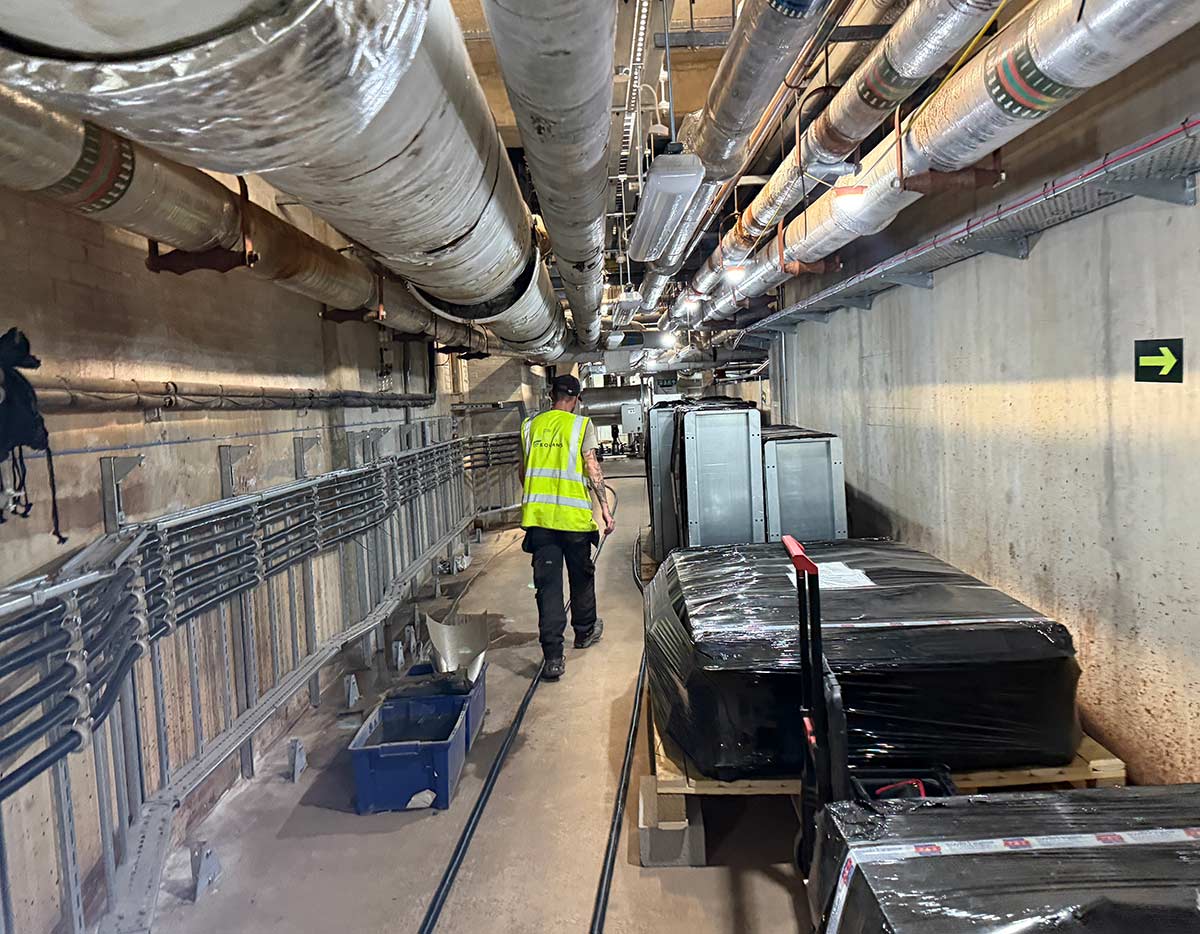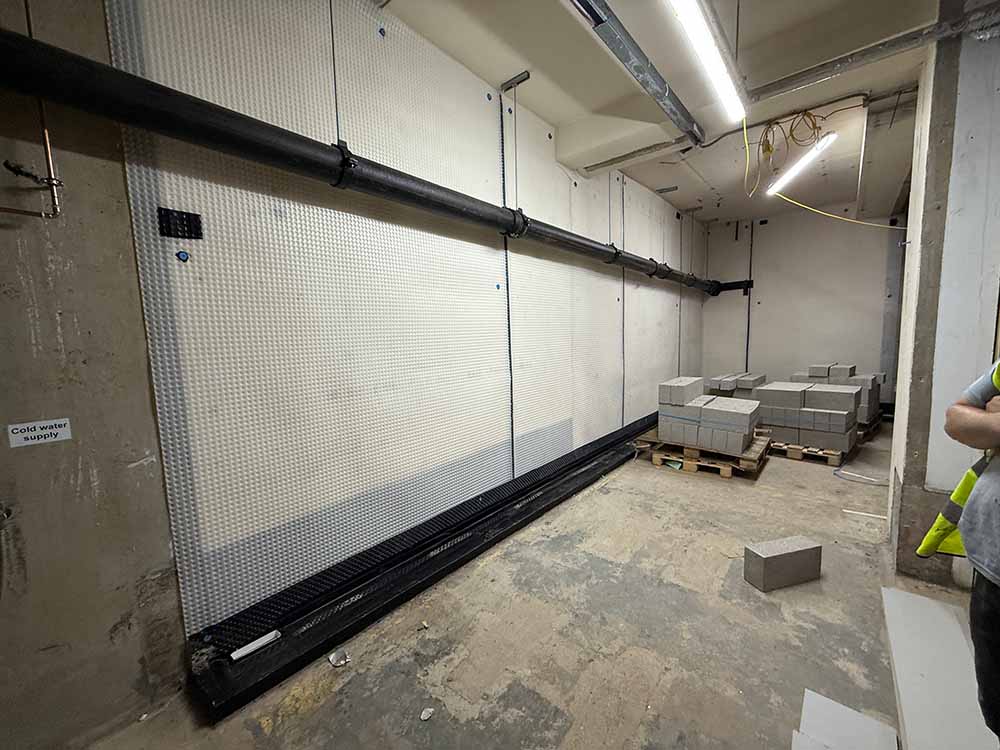Manchester Royal Infirmary Plant Room Waterproofing


Protecting the Heart of Healthcare Infrastructure
Trace designed bespoke systems and solutions across five different areas within the basement, four these being remedial and a fifth to accommodate a new electrical plant room.
Assessment of water ingress issues: Trace identified leaks primarily at movement joints in both original and extended basement areas of the MRI, including where new core holes were formed for cabling.
Bespoke waterproofing solutions: Designed tailored systems across five basement areas, combining barrier tanking, coatings, elastomeric sealants, EPDM press seal gaskets, and cavity drainage.
New electrical plant room protection: Developed a waterproofing solution specifically to accommodate and protect a newly constructed electrical plant room.
Safe implementation in a live environment: All works were designed to control water ingress effectively while the hospital remained operational.
Trace were asked to design waterproofing solutions for issues of water ingress, into the basement plant rooms, at the MRI, and also to design in protection where new electrical plant rooms are being constructed.
The current main building has been through significant expansions and modernisations throughout the 20th and early 21st centuries. One of the major developments included extending the structure to provide additional clinical and laboratory space, during which the basement was enlarged to accommodate new plant rooms, utilities, and service infrastructure.
Both the original and extended basement areas we are working on, were constructed in cast reinforced concrete. It is typical that where two concrete structures are built against each other, that Structural Engineers will design in ‘movement joints’.
These joints essentially form a small slot or gap between either structure, allowing for some movement between them. These joints can be sealed in a number of ways, however at the internal face, there is often an elastomeric flexible sealant material.
Over time these joints commonly leak, and so much so that British Standard 8102 best practice guidance for basement waterproofing, now states that movement joints are ideally avoided in basements altogether.
At MRI there were various areas of water ingress, but all associated with movement joints. Even where new core holes were formed to run cables through an internal wall between the old and new basements, the hole passed through the joint and this resulted in escape of water.
Trace designed bespoke systems and solutions across five different areas within the basement, four these being remedial and a fifth to accommodate a new electrical plant room.
Designs included a combination of barrier tanking/coatings, elastomeric sealants, EPDM press seal gaskets and cavity drainage to safely control the issues of ingress, working effectively in a live hospital.
Other recent projects
Experts in Structural Waterproofing & Timber Repair
Trace are Industry leading waterproofing contractors
Get in touch













.avif)







.avif)
